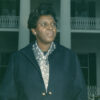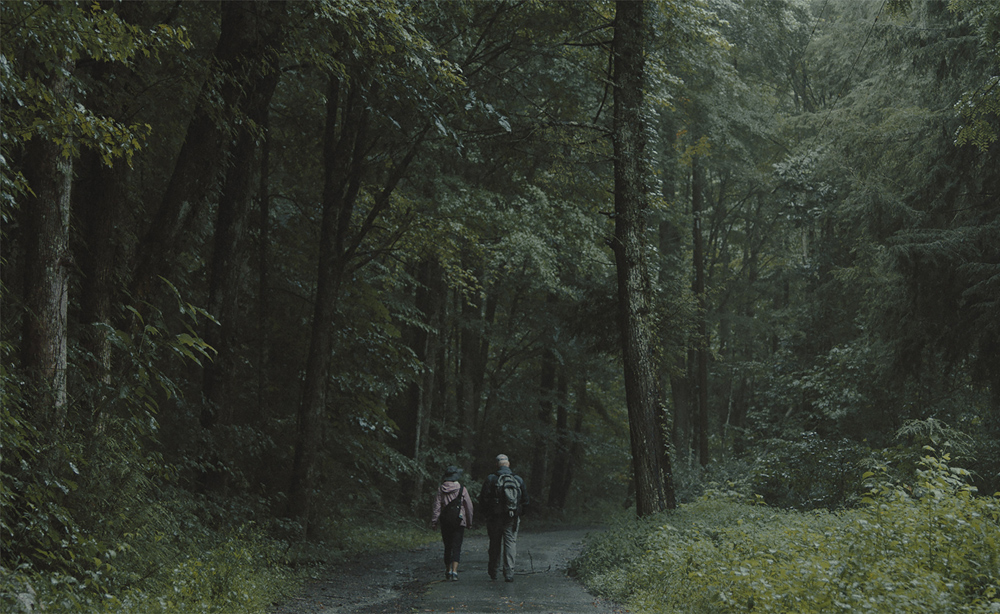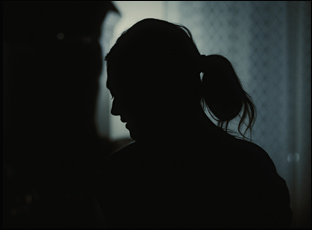There were times when Greta Zozula was working her way up in the camera department on various productions that it may have seemed like she might not have had all that much interest in the technical details of any given scene, far more concerned with getting the emotional ones just right.
“Even [when] I was a camera assistant, the way that I pulled focus was more story motivated than it was technical,” says Zozula, adding with a slight chuckle, “As a technician, I wouldn’t say I was the greatest AC, but I could get on the same page with the [director of photography] almost immediately because I understood it from a story perspective.”
Of course, if that was ever perceived as a weakness of Zozula’s in the early days of her career, it’s become a considerable strength as she grown into a formidible director of photography, and perhaps explains why her work is so powerful when it’s usually so understated, deepening the experience with imagery that is clearly the product of a keen eye, but seems to have emanated as much, if not more, from an old soul.
Like no one else can, she invites you into a place in the films that she’s worked on as if you’ve been there already, from the bustling kitchen of a family preparing to watch the Super Bowl in Charlotte Glynn’s “The Immaculate Reception” or the carnival-like atmosphere that accompanied the execution of Ted Bundy’s execution as if it were a family BBQ in Laura Moss’ “Fry Day,” but as you stay there longer, you start to see things anew, letting the familiar become foreign when the characters onscreen become unsure of what the future holds. Even in Augustine Frizzell’s delightful stoner comedy “Never Goin’ Back,” the cinematographer lends an unexpected gravitas to the proceedings, making it feel as if she’s trapped the sweat of two young women trying to hustle their way out of a dead end life in Texas the frisson of the grain in the frame.
This ability to skillfully stir the senses without calling attention to how it’s being done is no doubt why was a perfect choice to shoot “Light from Light,” Paul Harrill’s graceful second feature about a widower named Richard (Jim Gaffigan) who learns of a local ghost hunter named Sheila (Marin Ireland) he ultimately hires to investigate his wife’s death and to see whether she’s still hanging around their house. With Richard feeling slightly silly making the request, it’s no small task for Harrill to get an audience to take the premise seriously in a rare drama to engage the supernatural not as a scare tactic, but to unearth the very real doubts and fears its central duo has about the paths their lives have taken and their faith in the choices they’ve made. Along with the writer/director’s own confidence in the story he’s telling and strong, tender performances from Ireland and Gaffigan, that credibility comes in no small part from Zozula harnessing the fog that gathers around the Great Smoky Mountains of Tennessee, where the film is set, to gradually illustrate the clarity Richard and Sheila begin to find upon making a real connection with each other and convey the possibility of the paranormal in beautiful, unforced ways in which the absence in spaces creates a presence.
As “Light from Light” makes its way to theaters following its premiere at Sundance earlier this year, Zozula was kind enough to take the time to talk about how she came to collaborate with Harrill and being able to communicate so much about the characters from their environments, as well as working with native light sources, bringing out the cinematic qualities of working class life and visually following the energy of a scene.
I did a film “Never Goin’ Back” with Augustine [Frizzell], and James Johnston, one of the producers of that movie is a producer on “Light from Light,” and he had been working with Paul for a while, even before “Never Goin’ Back,” and I think Paul had known of my work even before James connected us. He had watched “Immaculate Reception” and that film was very close to what he was looking for, but it just happened that James and I got connected through the other film, so it made it an even easier connection.
When we really started talking about the look of the film, [Paul] was looking for something that was comfortable in shadows and warmer, I think that’s why he liked “Immaculate” so much is because it’s just a very dark, warm movie, so we talked about how I shot it and how that could translate to this film because I shot [on “Immaculate”] on 16mm and we weren’t going to do that on this film, but [spoke about] ways that we could recreate that feel otherwise and how to translate digital and make it feel filmic.
There’s always such great texture to your work. This is jumping ahead, but can you achieve most of that on set or is it something you have to work towards in post-production?
It’s tricky. In a perfect world, I do like to light that way where I do it as practically motivated as possible, but circumstantially, it changes. With “Light from Light” specifically, we did as much as we could. For how small this film was and the limited resources we had, we actually got really close to what we wanted on set. There were definitely scenes that needed a little more love but the overall feel and look was already there. When we first started talking about the look of the film, Paul and I referenced a lot of paintings. For the porch scene [for instance], Paul had one image of [Edward] Hopper’s “Summer Evening” that was like *the* image that we referenced and were inspired by for that whole scene, and then for Marin’s character Sheila, we specifically referenced [Andrew] Wyeth and his “Helga” series, like Helga was that character, so those paintings were references in lighting and texture and color. And then we referenced Vermeer for Rich’s house, so we went the route of painting more than anything else. I sent very specific images to the colorist to created a LUT that fit some of those textures in terms of how we were utilizing contrast and saturation and that got us most of the way, and it kept us honest on certain things and we were able to dial it in and then when I went back to finish color.
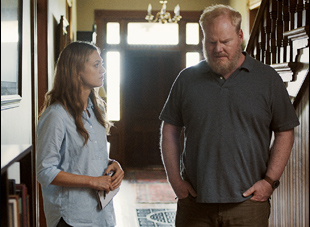
What was scouting like for these places?
Before I even started, Rich’s house was the first location they found and that was a relief because the house has so much history and you really feel it, so it was just so appropriate. The outside environment and the inside, the richness of the wood, the windows and the interior design of the space was mostly already there and then Brittany [Ingram, the production designer] did a beautiful job with this film. She brought in some critical light fixtures for both Richard and Sheila’s houses that are their own characters — like the dining room table lamp in Sheila’s house and the curtains in Richard’s. She found all of them and the perfect color green for Richard’ living room that was a direct reference to a Vermeer painting “A Girl Reading a Letter by an Open Window.”
Her sense of color and texture is so spot on. In the upstairs bedroom, the sheers she picked for the windows in that room are so important for those scenes. Without them, we would have been missing something very special in texture a how it diffused light for both the flashlight silhouette of Sheila and the ending when Sheila looks out the window out to Rich and the kids. in beautiful things to accentuate it, so that was really important piece. Then finding Sheila’s house was probably the most difficult because it was very, very specific for Paul. It needed to have this feeling of warmth and security, but also to reflect her financial situation and where she is in her life.
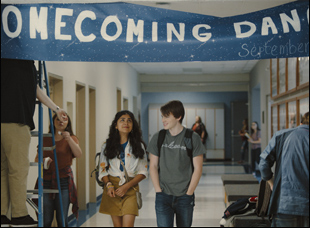
It’s definitely in part because I can relate to growing up in that environment. I grew up in a very poor town in southwestern Pennsylvania that is a a very working class farm community. It didn’t have a ton to offer, but my parents never let financial limitations get in the way of having a lot of fun and enjoying life. They are kind of like Bohemians that way. We just did things our own way in the most artistic, weird ways we could think of and had a blast. There was always something cool and fun about being thrifty and learning how things worked and how to make something instead of buying it. It ultimately made me more creative and see life as a kind of an endless opportunity because I appreciated everything I had and felt like I had a lot.
So if that translates to my approach to cinematography, I would say it’s a combination of relating to and understanding what its like to live in that environment, but also being able to see the beauty in it without overly romanticizing it. That’s a delicate balance and I try to be as honest as possible with my approach, whether that be in lighting or camera movement because I believe it can have more of an impact and lasting impression that way.
What was it like filming in the mountains?
The Smoky Mountains were a very important part of the movie as well and just being able to find those spots and that lookout point was very specific place [was something] he had in mind, and [we had to] show the Smoky Mountains without having to actually shoot the whole thing there, so [the challenge was] to mix different environments there and see how they could connect. And the Smokys are beautiful, but they create their own climate and big storms would come in and get kind of crazy, so we ended up being somewhat limited in what we could get, but the result was so satisfying because you really got a sense of it and at that point [they appear] in the film, it really does represent what they’re going through at the moment.
There’s an entire passage of the film in the woods that’s largely lit with flashlights. In that situation, do you engage with the actors much since they’re in some ways the primary light source?
That was tricky, especially because the way Marin [Ireland] performs, she’s very much in [the scene], and we didn’t want her to have to light herself too much. We did have to guide her a little bit, so it was finding a balance between not having her be conscious of it, but also being able to place a flashlight in certain positions and most of the time, it was just trying to figure out how to motivate it so that it didn’t feel unnatural — it would feel like she’s just pointing the flashlight purely to do that, so we found ways to motivate it in character.
The movement in your films is often subtle but effective – what’s it like finding the energy of a scene?
It’s different with every director, and I’m sure I have some subconscious tastes that I can’t help but bring to it, but I never have that in mind. If a director is very specific about what they want and we talk about the story and we’re on the same page about it, that’s really the first step for me in terms of how it’s going to be approached. “Fry Day,” for example, had a mix of still shots, moving shots and handheld shots and those were motivated by the scene and by character and we came up was the best way to tell that story.
With Paul, it was very important for him that it was more about creating compositions and still life. His references to paintings are so strong and we took that structure even to the [1.66] aspect ratio of feeling a little bit more like we were in a painting rather than moving shots that were creating emotion. We wanted to give that specifically to the actors to create that emotion, rather than push in on the emotional moment or pull away on the emotional beat. We really wanted them to have the control of that and have the camera be less noticeable and really just capturing the moment.
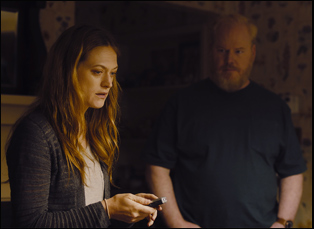
That was a big conversation we had about not overusing closeups and really reserving the closeup for the right moment, and it was a little tough sometimes not to go in more, but then not really because those moments where we go in for closeups really felt right. [Being] a little bit more observational and reserved felt appropriate for those scenes as characters started to get to know each other, so there was a natural build. It never felt wrong because that was the kind of story we were telling.
Was there a particularly challenging day of filming that it was exciting to see ultimately come together?
Shooting the night stuff was particularly difficult. And the bee sting [Sheila’s daughter Lucy, played by Atheena Frizzell] gets was challenging for many reasons and I’m really satisfied with how that whole scene [at Rich’s house] played out when she goes into the bedroom. That was a perfect combination of design and [what we captured] in the moment [where] we had talked about wanting her to walk into the space and create her own silhouette and create that tension by doing so, but that specific moment where she lands in that silhouette, [inside] the curtains that represent [Rich’s] wife, it just all fell into place so perfectly. That was probably the most satisfying thing we shot to see come to life and really work.
“Light from Light” is now playing In New York at the Quad Cinema and in Philadelphia at the Ritz at the Bourse. It opens on November 8th at the Nuart Theatre in Los Angeles. A full schedule of theaters and dates is here.



